Navigating the Pandemic: The Views of Special Education Parents
There is a quote that I came across a while ago: “Every student can learn, just not on the same day, or in the same way.”
Education is personalized. Each student is different. Parents are also different, but they share a common goal: obtaining the best education possible for their child. Obstacles arise enroute to this goal, and the parents of a student with a disability are faced with unique ones.
Before we delve deeper into our pandemic polling of parents of students with special needs, here are some toplines:
- Special education parents are generally more optimistic about the direction of K–12 education than other groups of parents.
- When looking at alternative and nontraditional forms of learning—like tutoring and learning pods—special education parents are consistently expressing more interest and participation.
- At the same time, special education parents and other parents, alike, seem aligned on matters regarding vaccinations, masking, attending school in person, and various educational choice policies.
About Our Polling Method
Since January 2020, we have surveyed a nationally representative sample of American adults every month. Starting in November 2020, we began to identify parents of school-age children who were in special education at their school. In our new report, we describe trends based on the monthly samples of special education parents (usually around 200 to 300 respondents). On many questions we also present snapshots of averaged responses based on the cumulative sample for the period October 2021 to January 2022 (998 special education parents; 3,716 non-special needs parents). This pooling approach allows us to report more reliable information about special education parents’ opinions by demographic.
For our latest polling report, we identified two main groupings of school parents: (1) those who have children in special education at a school (public or private); and (2) those who do not have any children with a disability of any kind. To give a little more clarity, the following are the ways we defined our parent respondent groups:
“Special Education Parents” – have at least one child, under the age of 18 that is currently enrolled in school, that has had a health or education professional determine they have a physical, learning or social/emotional disability. Additionally, that same child must also be a part of an Individualized Education Program (IEP) or a similar special services plan.
“Non-Special Needs Parents” – do not have any children with a diagnosed physical, learning or social/emotional disability.
Let’s dive into more key findings from our latest wave:
1. Toward the end of 2021 and start of 2022, nearly 3 out of 4 parents said they were comfortable with their children returning to school. Special education and non-special needs parents are in alignment on this question, with the comfortability level increasing closer to the peak levels seen last summer.
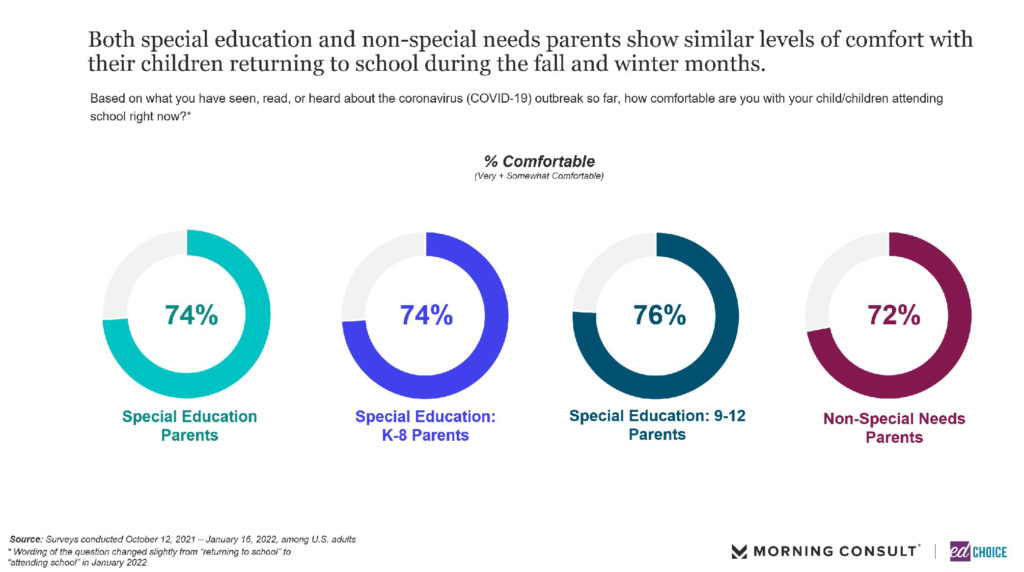
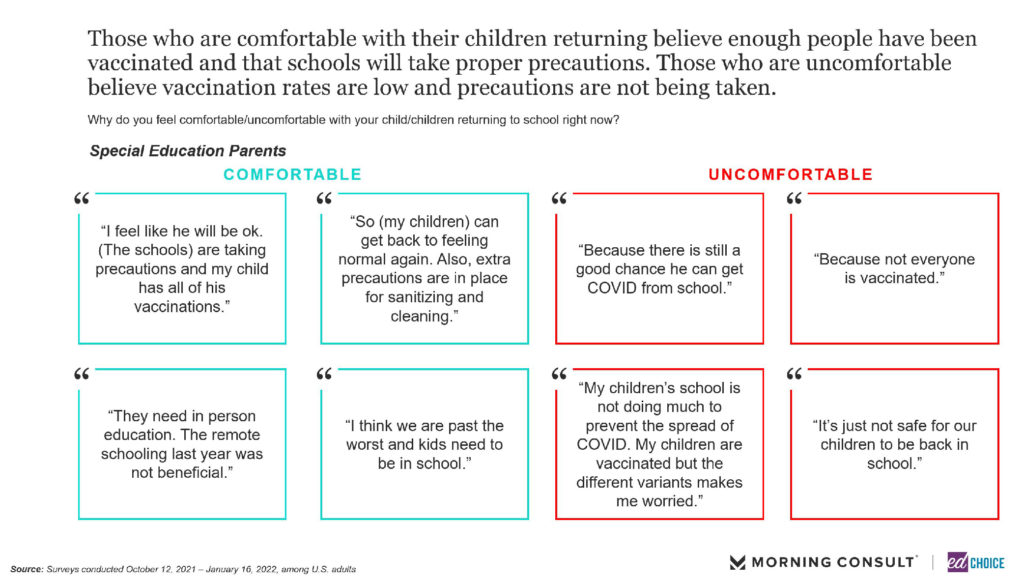
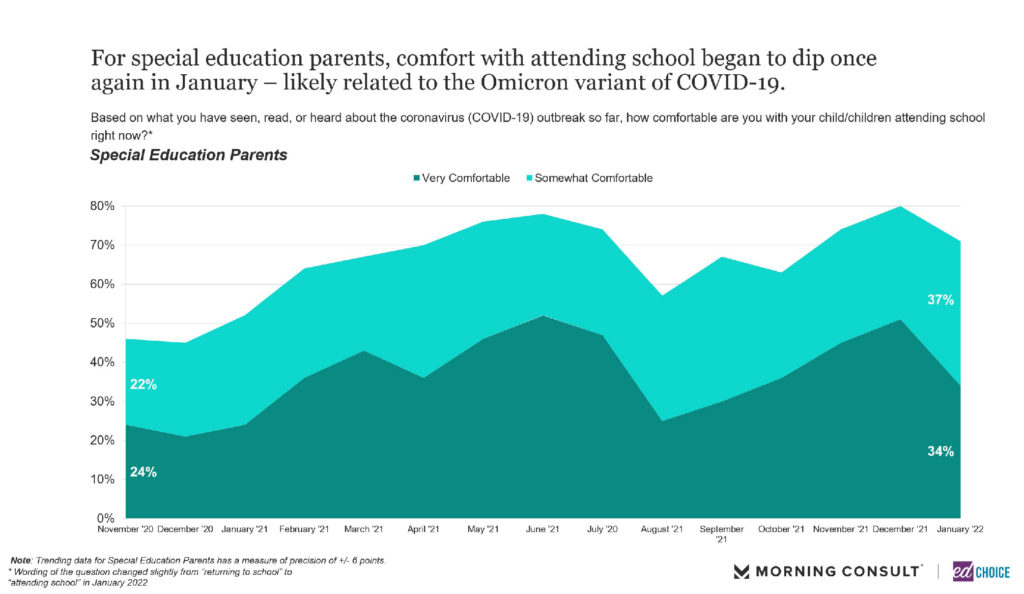
2. Special education parents believe individualized learning plans and more access to technology would be most beneficial to their children coming out of the pandemic. We see the biggest response gaps between special education parents and non-special needs parents when asking about individualized learning plans and longer school days to provide more instruction. Individualized learning plans are much more common among students with disabilities who can be eligible for an individualized education plan (IEP). Schools providing technology like laptops, tablets and high-speed internet to their students is a shared priority. More than 6 out of 10 non-special needs parents found value in providing better technology, as well, making it the top priority among the group.
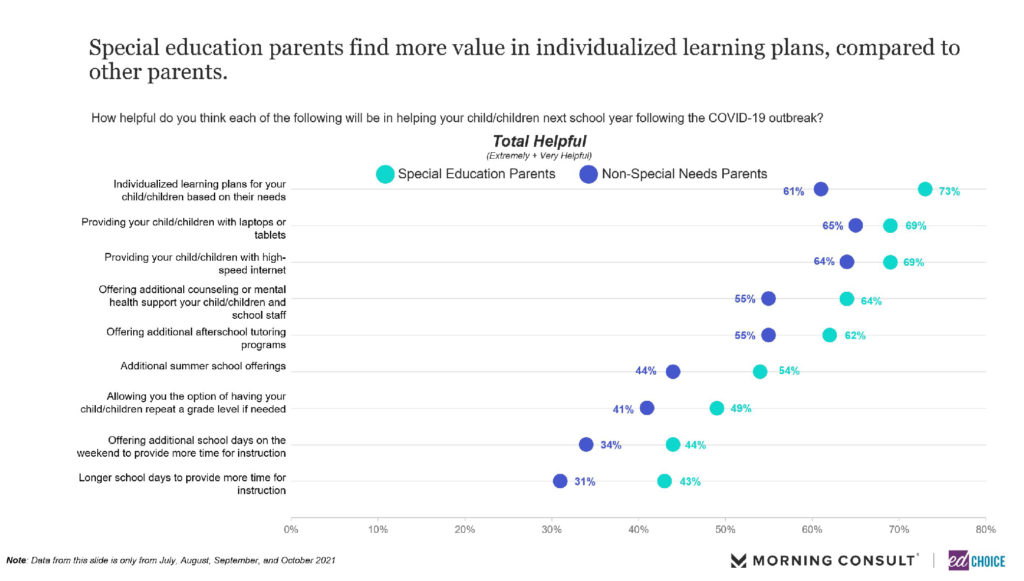
3. A very large proportion of special education parents—two out of three—say they prefer having their child be schooled at home at least one day per week. This is a slightly higher proportion than that of non-special needs parents. For special education parents of younger children (K-8) the support for having at least one day of school per week occur at home is even stronger, sitting at 70 percent. The support for a portion of the school week to take place at home from special education parents has maintained the same level since the fall of 2021.
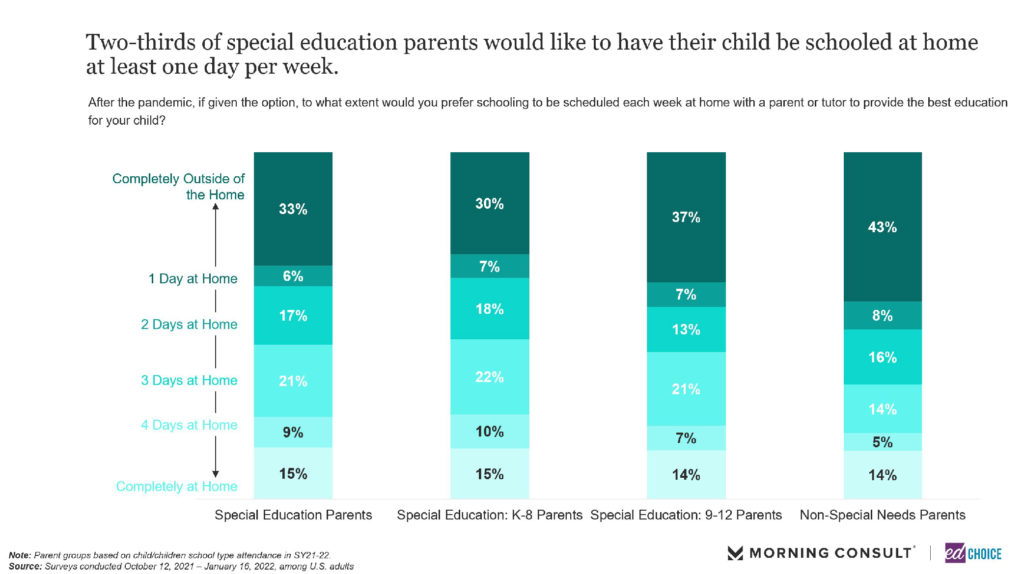
4. Special education parents report they have a child participating in a learning pod or tutoring at a much higher rate than other parents. Student participation in tutoring and learning pods has grown during the pandemic. Nearly one-third (30 percent) of special education parents report having at least one child in a learning pod, a slight uptick from the fall. Compared to other parents, special education parents are almost three times as likely to report participating in a learning pod.
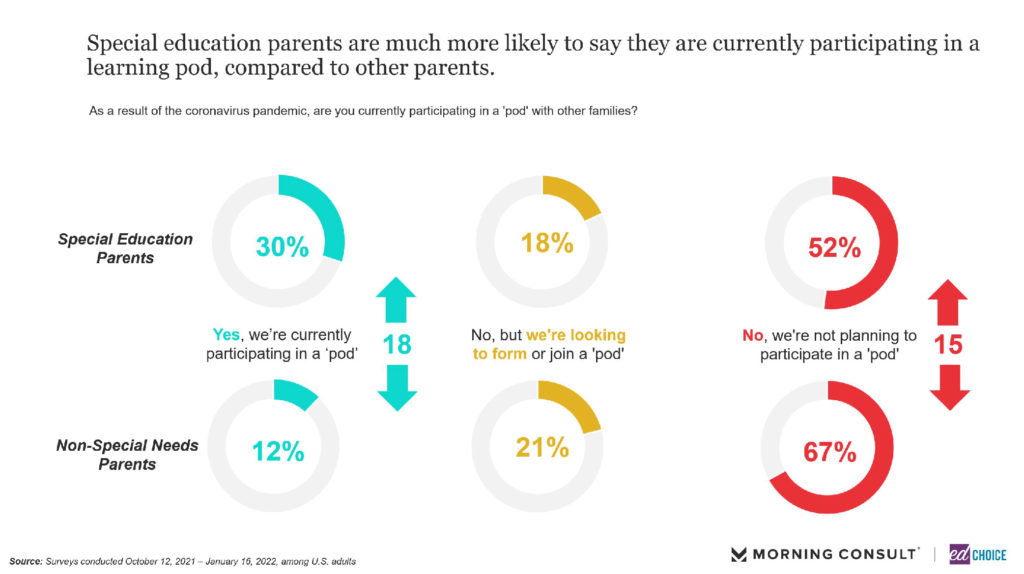
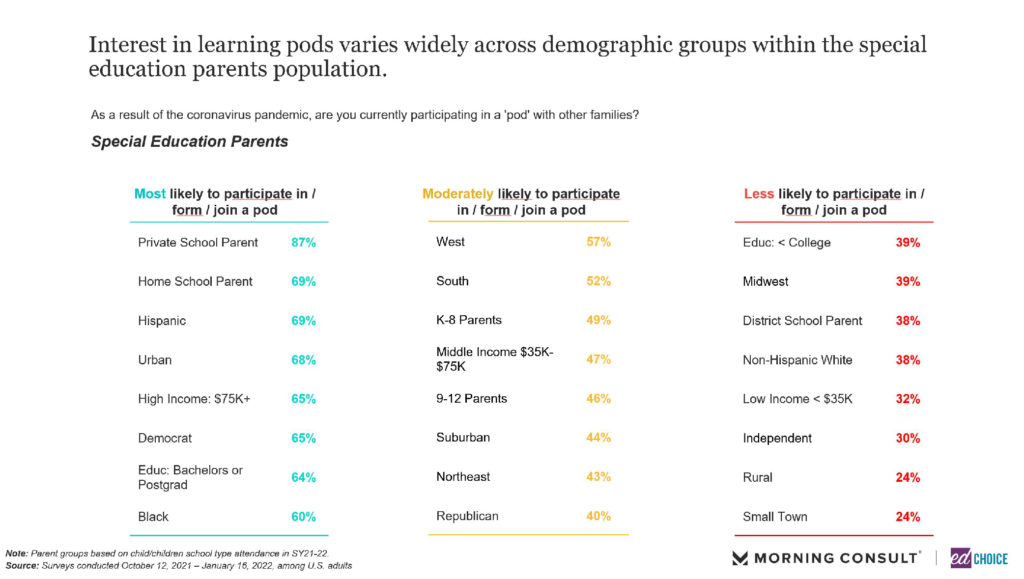
We find a similar pattern with tutoring. Since the fall, special education and non-special needs parents reported slightly increased levels of tutoring. However, special education parents are more than twice as likely to report their child being tutored than other parents. Tutoring and learning pod interest varies extensively among demographic groups within the special education population, with private and homeschooling parents expressing the most interest.
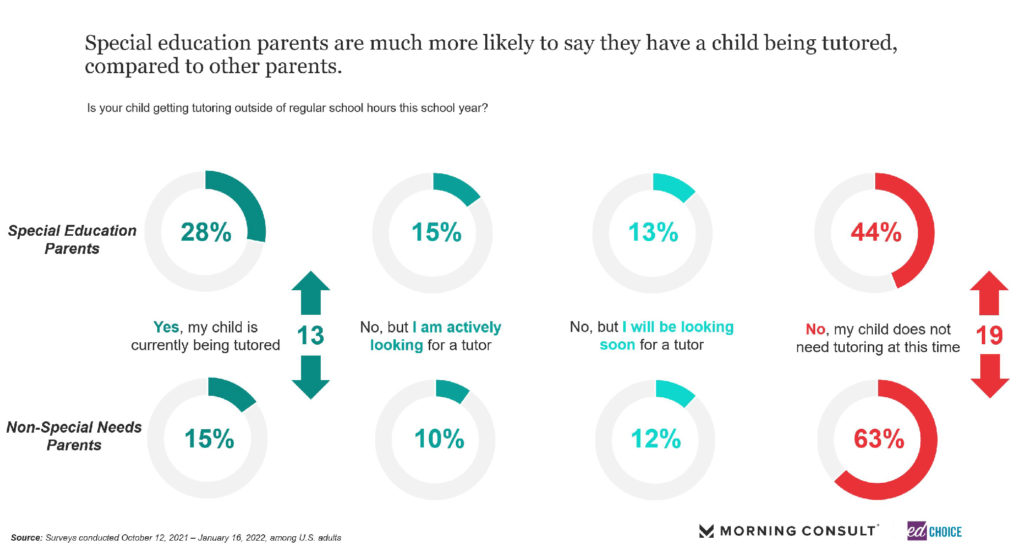
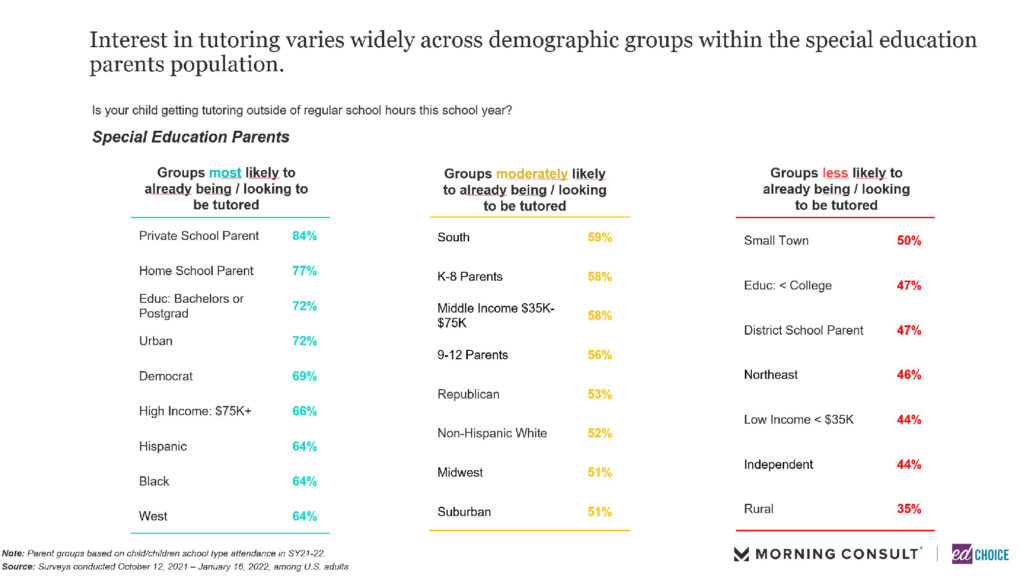
5. Special education parents consistently exhibit high levels of support for educational choice policies. Education savings accounts (ESAs), school vouchers and charter schools are supported by more than 75 percent of all special education parents. ESAs, in particular, enjoy more than 80 percent support. Educational choice favorability among non-special needs parents is marginally less than special education parents, though the level of support still remains high at more than 70 percent. Additionally, as we see with other groups of parents, special education parents’ support jumps considerably when a description of each educational choice policy is provided.
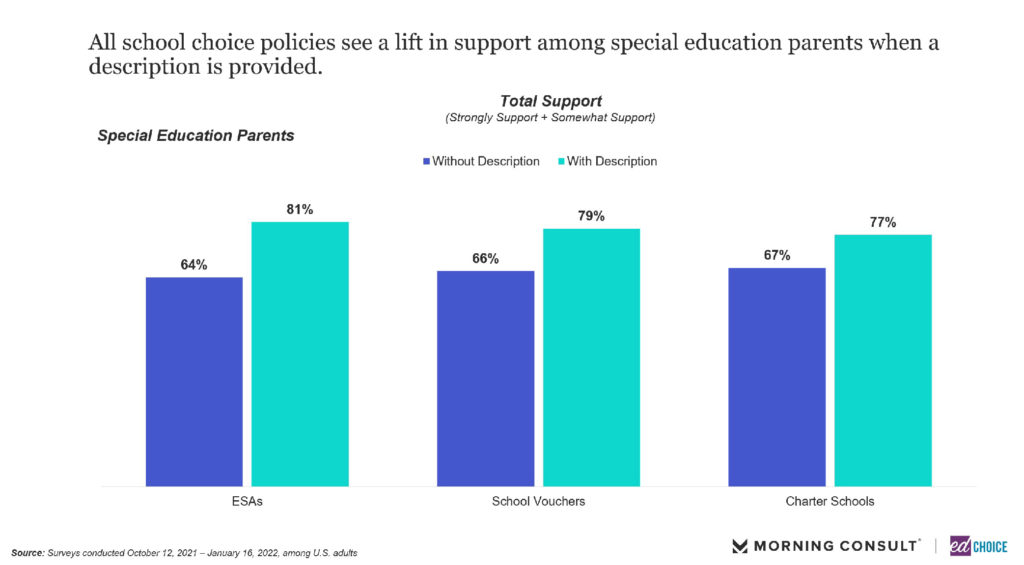
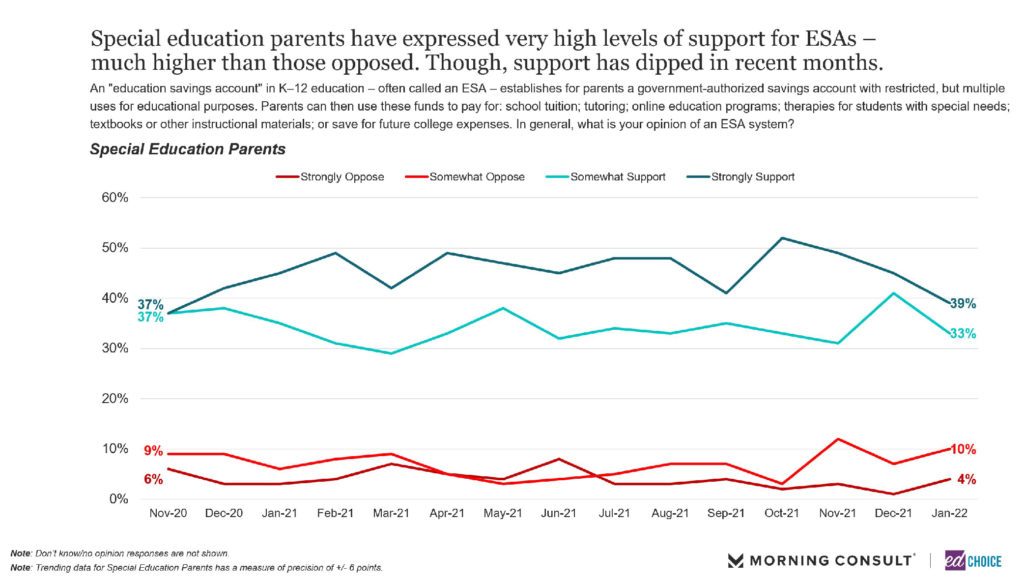
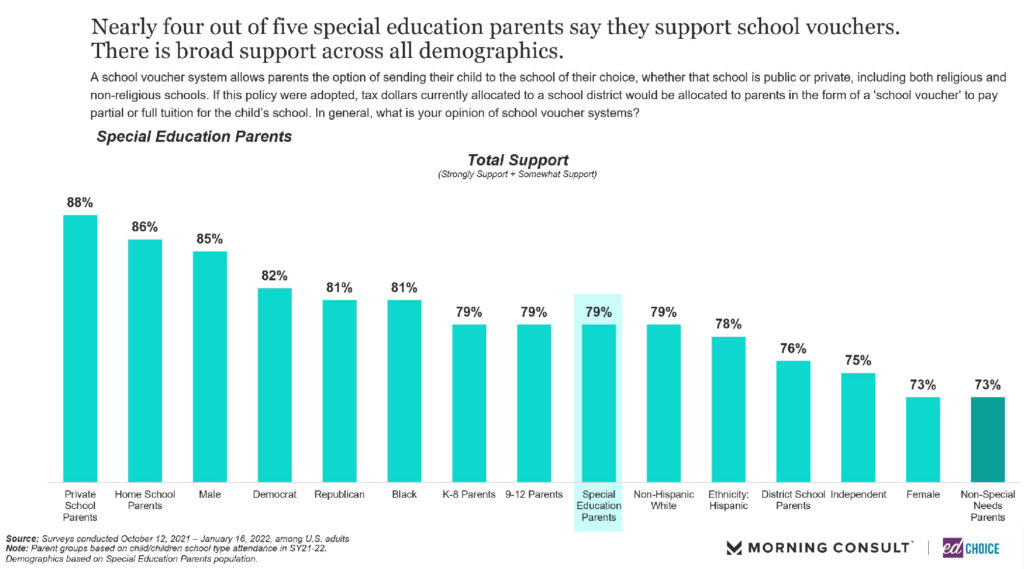
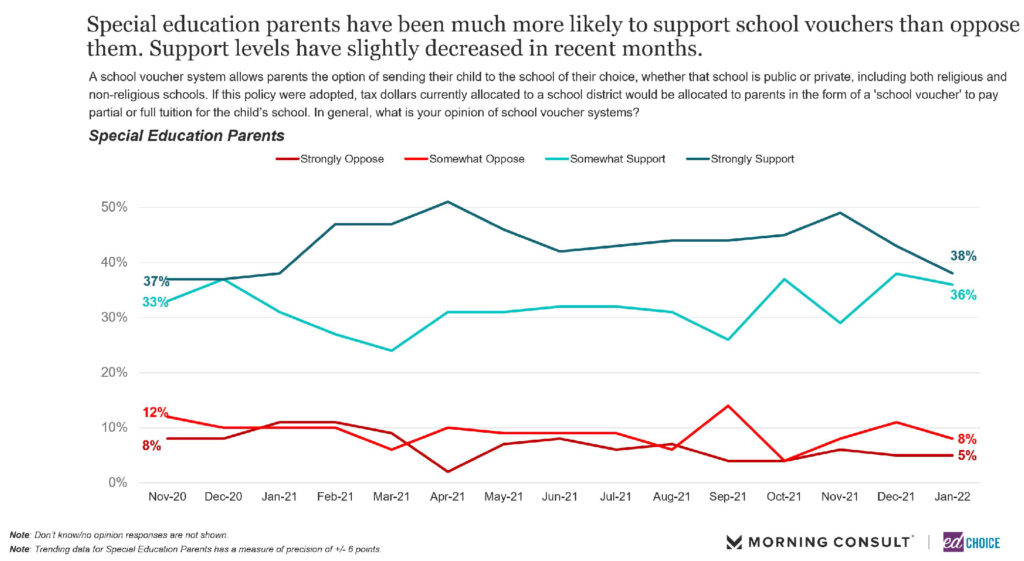
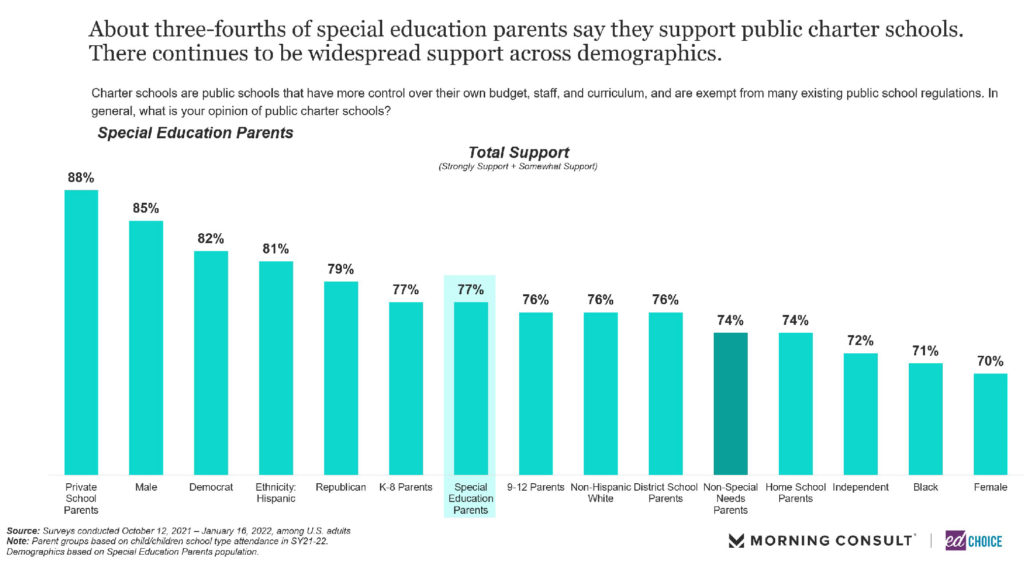
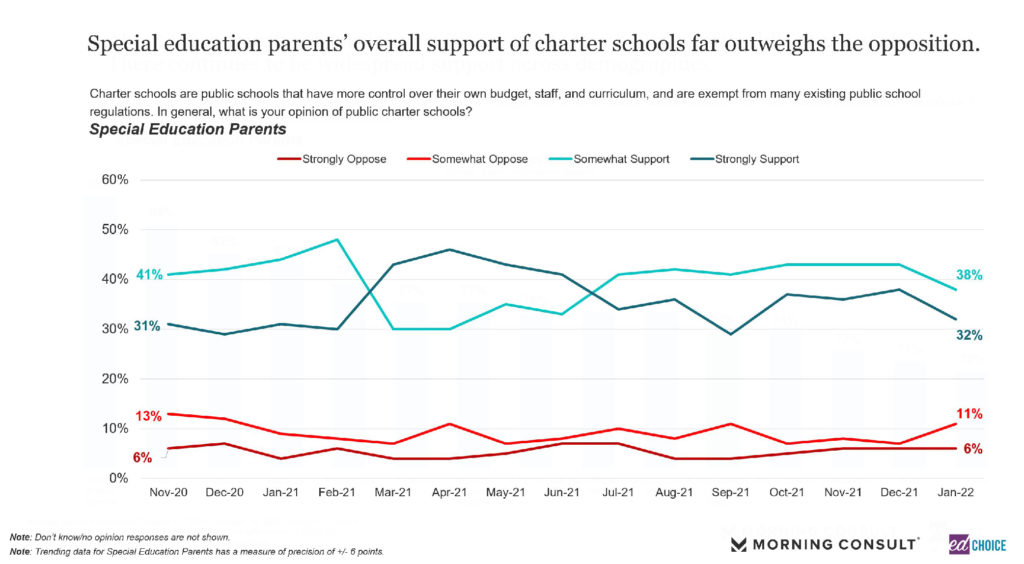
6. More than half of special education parents prioritize independent thinking and core academic subjects for both K-8 grades and high school education. They cite skills for future employment as highest priority for high school. On the other hand, roughly one-third of special education parents believe fixing social problems should be a priority for K-8 and high school education. Special education parents prioritize socialization at a higher rate for high school education compared to the general public, as well.
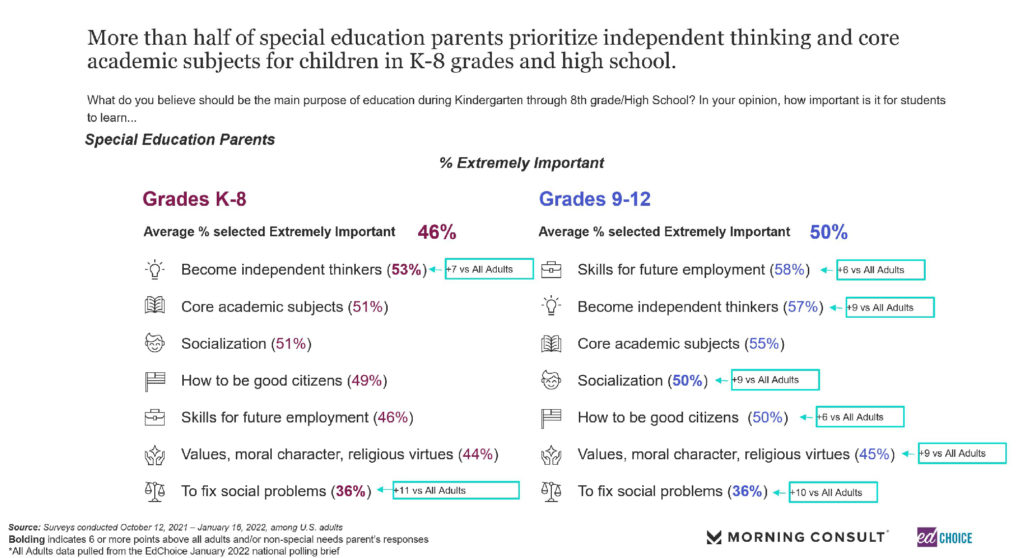
7. When presented with a publicly recorded statistic, special education parents are less likely to say their state’s per-student spending is “too low.” The same trend can be seen among non-special needs parents, as well. Interestingly, when shown more information regarding their state’s per-student spending, non-special needs parents are twice as likely to say the spending is “too high.”
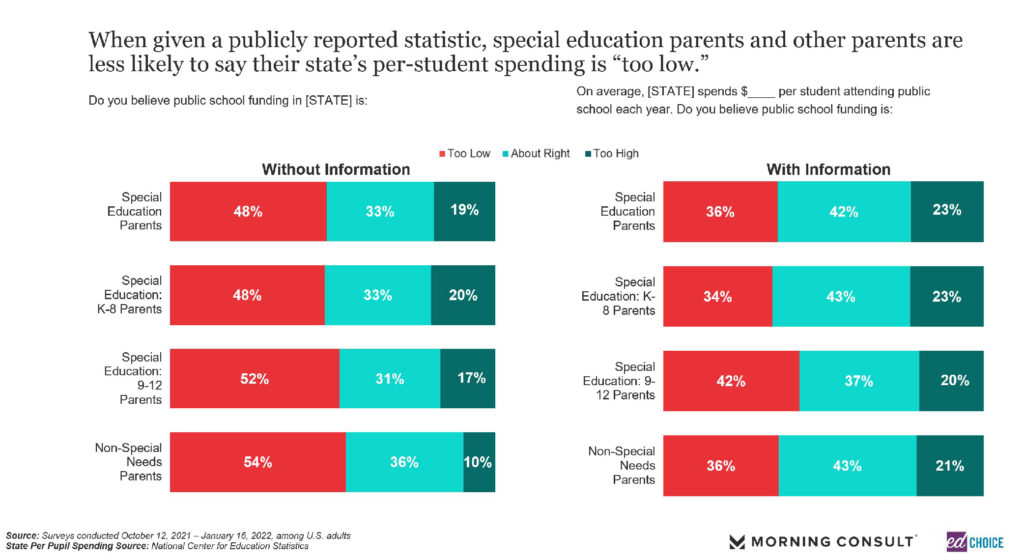
8. Special education parents are more optimistic than other parents about the current state of K–12 education. Positive sentiment towards K–12 education has been decreasing in recent months, however it’s been unable to reach the levels of optimism seen in summer of last year. Results in the chart below reflect average responses from October to January. Both groups of parents expressed similar levels of optimism regarding the landscape of K–12 education locally (their local school district and statewide education). However, as the geographic consideration expands so does the gap between the groups of parents. When evaluating K–12 education nationwide, special education parents are nearly 10 percentage points more likely to say K–12 education is going in the “right direction” than other parents.
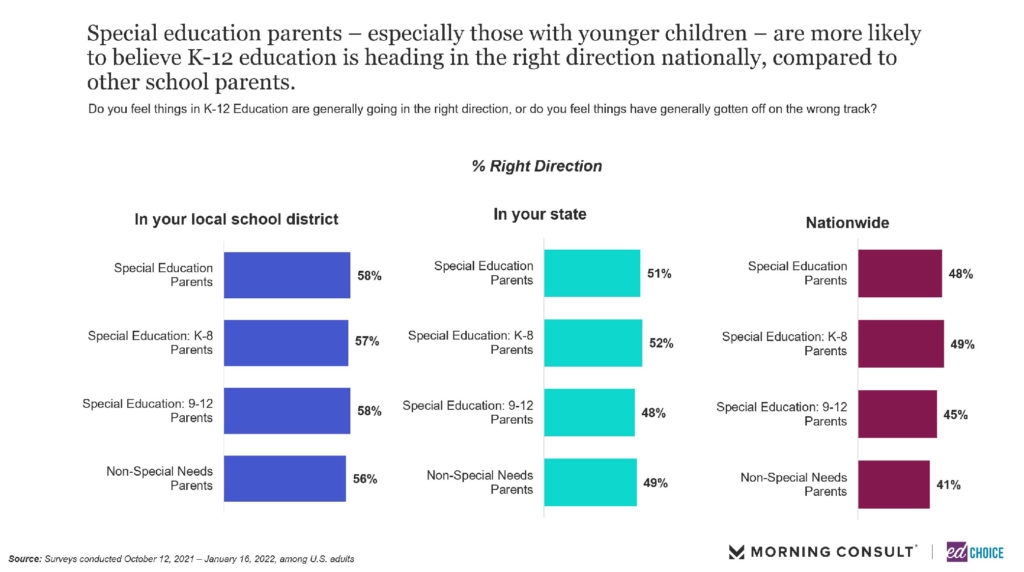
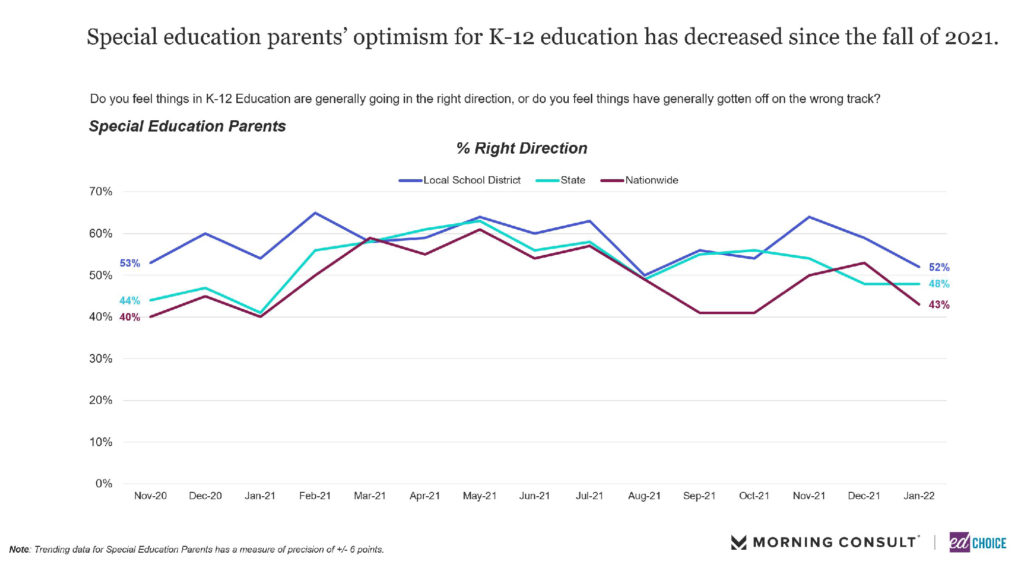
9. In the late fall and early winter, approximately half of special education and non-special needs parents agreed that masks should be mandatory for teachers and students. The support for masks has remained steady since the fall. Mandatory vaccines among teachers and students, on the other hand, garner less support.
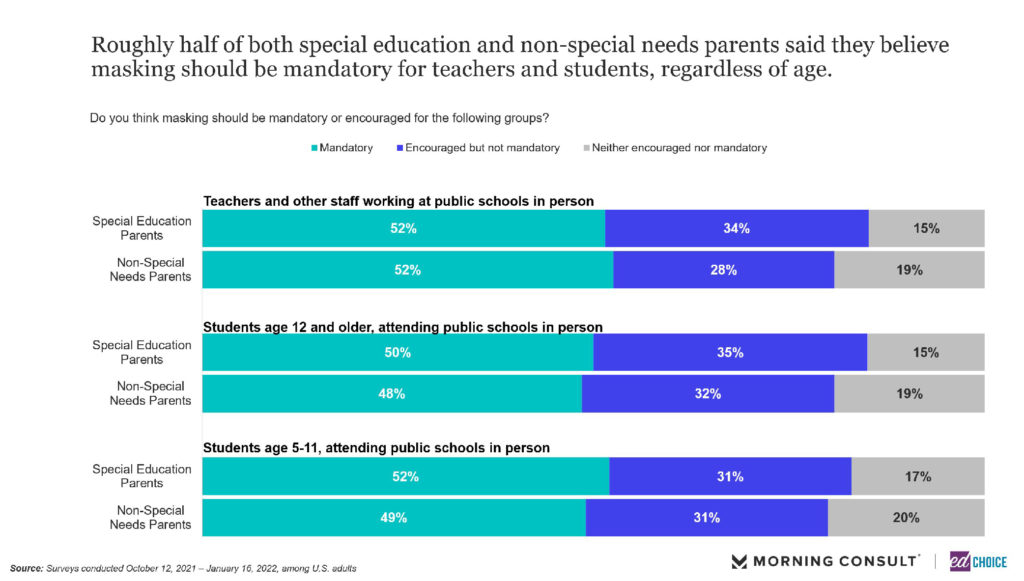
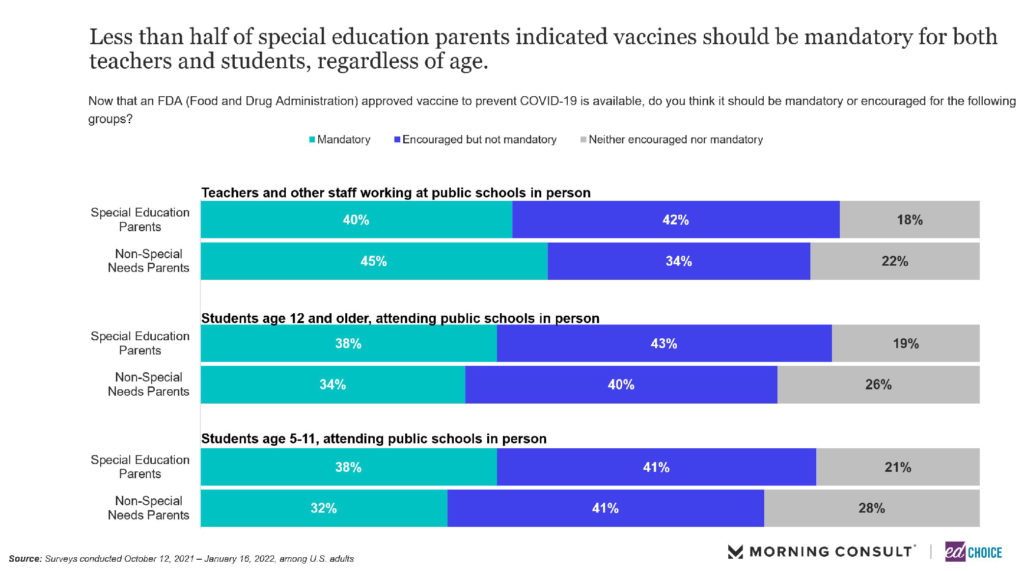
Visit the EdChoice Public Opinion Tracker site to access past questionnaires, and our national and state dashboards that are updated monthly. We also provide a more in-depth description of our research and survey methods.
Our K–12 education polls archive is updated on a rolling basis, roughly a few times each month. Please don’t hesitate to let us know if we are missing any surveys, or if there are accidental errors.




